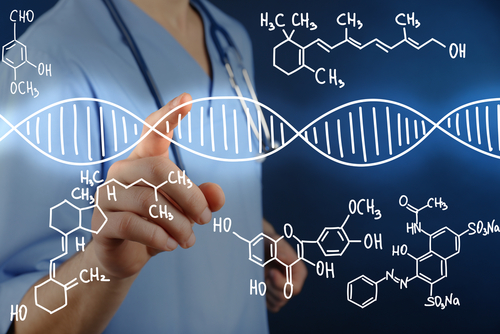A single dose of the gene-editing construct used in Homology Medicines‘ investigational therapy for phenylketonuria (PKU) in children, shows high efficiency and precision in inserting a fully functional copy of the PAH gene in an animal model of the disease.
These findings are intended to support the filing of an investigational new drug application to obtain regulatory clearance for clinical testing, according to a press release from Homology.
Results were presented in a poster, “Molecular Characterization of Precise In Vivo Targeted Gene Editing in Human Cells using AAVHSC15, a New AAV Derived from Hematopoietic Stem Cells (AAVHSC),” at the American Society of Gene & Cell Therapy 23rd Annual Meeting, which was recently held online.
PKU is caused by mutations in the PAH gene that leads to insufficient activity of an enzyme called phenylalanine hydroxylase (PAH) that is required to break down phenylalanine, which is an amino acid — the building blocks of proteins.
As a result, phenylalanine builds up to toxic levels in the brain and other organs, leading to intellectual disabilities and other neurological impairments.
HMI-103 is Homology’s experimental gene-editing therapy that uses a harmless adeno-associated viral vector developed from human stem cells, called AAVHSC, to deliver a functional copy of the PAH gene that replaces the mutated copy in liver cells.
This happens through a natural DNA repair process called homologous recombination, also known as nuclease-free gene editing, as it does not require specific DNA-cutting enzymes — or nucleases — for gene insertion.
According to the company, this strategy is currently the best possibility for a potential cure in children with the condition.
At the meeting, Homology presented new data showing that a single intravenous (into-the-vein) administration of the gene-editing construct used in HMI-103 — a viral vector developed from blood cell progenitors called AAVHSC15 — had a 6% efficiency in inserting the corrected copy of PAH in a humanized mouse liver model of PKU.
Humanized mice are animals that contain fully functional genes, cells, or tissues of human origin. Animals used in this study contained the human PAH gene locus (the place occupied by a gene in a chromosome).
This level of efficiency surpassed that of other gene-editing constructs reported in previous studies, and was sufficient to normalize phenylalanine levels in the mouse model of PKU.
In addition, no unintended off-target mutations or other abnormal genetic changes were detected following treatment, suggesting the experimental gene-editing construct was highly precise.
During the meeting, Homology gave other presentations focused on its commercial and manufacturing platform for gene constructs, as well as on some of the features of viral vectors that make up the core of the company’s gene therapy and editing platforms.
“Homology has made substantial progress in understanding the unique properties of our AAVHSC-based technology and this enables us to move our dual genetic medicines platform forward to develop potential treatments, or cures, for patients,” Albert Seymour, PhD, the company’s chief scientific officer, said in the release.
“We are pleased to share data here that describe the molecular methods we have developed to characterize in vivo, nuclease-free gene editing efficiency and precision at the DNA level,” Seymour added.
Besides HMI-103, Homology is also advancing a gene therapy candidate known as HMI-102 for adults with PKU. The Phase 1/2 pheNIX clinical trial (NCT03952156) is still enrolling participants in the U.S. More information on contacts and locations can be found here.

